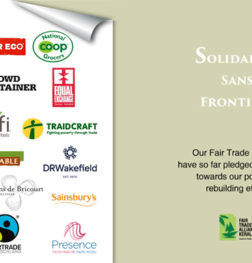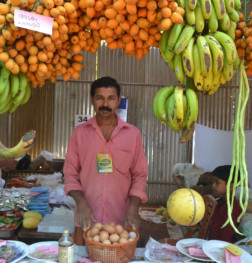
The cost of doing things differently
31 March 2011
Most people in the Fair Trade movement are aware of the difference between the Alternative Trading Organisations like Divine, Cafe Direct, Traidcraft and Liberation Nuts, and the other Fairtrade certified products e.g. supermarket own brand goods,* although having said this, increasing this awareness to the general public is a different matter! However, in the same way, there can also a big difference in the type of producer groups who are part of the Fair Trade system. Just as there are those at the retail end who do the minimum in order to get the badge and cash in on markets, you can also find the same situation at the producer end. And just as Divine’s market is threatened by Cadbury’s Fairtrade chocolate or Cafe Direct’s by Tesco own brand Fairtrade coffee, so too are Fair Trade Alliance Kerala (and others like them) threatened by those certified producer companies who can offer products at a lower price, basically because they don’t have the high costs associated with doing business in a truly different way.
Despite what the Adam Smith Institute and others think, Fair Trade is part of the market driven competitive world and all must fight to stay in it. Fair Trade retailers must convince the public to buy their product above the other Fairtrade certified goods, and Fair Trade producers must convince the Fair Trade retailers to buy theirs! The producer groups and Fair Trade Organisations who do being a ‘Fair Trade producer group’ or being a ‘Fair Trade Organisation’ the best will necessarily be more expensive and both have challenges ahead about how to fight their corner in the ethical market place. The Fairtrade label’s greatest achievement- to communicate at a glance an ethical seal of approval of a product- is also the main obstacle for those who want to say “yes we are all this but also so much more!”
There has been talk for a long time in the Fair Trade movement about how to differentiate those organisations set up with the sole aim of fair trading, to those who have the main aim of creating wealth for shareholders (at the core these are very different motivations!). And we are getting to a stage where we need to have the same conversations about the producer groups, so that Fair Trade buyers who for so long have asked the public not to fall into the trap of joining the race to the bottom, don’t make the same mistake themselves.
* I’m just using supermarket own brand products as an example but it isn’t a rule that they do only the minimum. Sainsbury’s, for example, were trailblazers in bringing the first Fairtrade certified coffee over from the war torn Democratic of Congo to market and the Co-operative have been key in growing the Fair Trade market.


